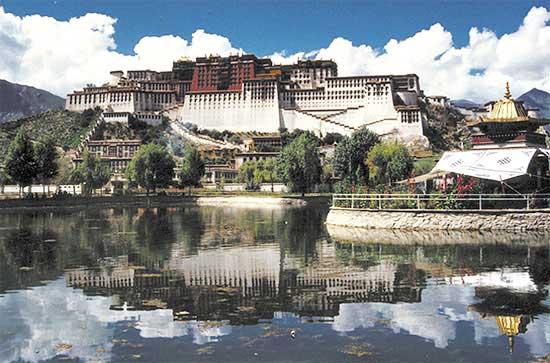Chinese Name: La Sa Bu Da La Gong He Da Zhao Si
English Name: The Potala Palace and the Jokhang Temple, Lhasa
Approval Date: December, 1994
Heritage category: Cultural heritage
Selection Criteria: Based on the standards C(I)(IV)(VI) for selecting cultural heritage, the Potala Palace was listed in the World Heritage List. Shortly after, the Jokhang Temple, Lhasa was also listed and in December 2001, the Norbulingka Summer Palace of Lhasa was also listed.

The Potala Palace
Assessment of the World Heritage Committee
The Potala Palace and Jokhang Temple are located on the 3,700-meter-high red peak in the center of the Lhasa River Valley. They are both integrated buildings for administrative, religious and political affairs. The Potala Palace consists of the Red Palace, White Palace and peripheral buildings. Since the seventh century, it has been the Dalai Lama’s winter palace, and it represents the center of Tibetan Buddhism and every regime. The beautiful and delicate architecture, the florid decoration, and the beautiful natural landscapes around it make the historic and cultural Potala Palace even more charming. The Jokhang Temple is a group of very distinctive Buddhist structures. The Norbulingka Summer Palace, which began construction in 18th century, was the Dalai Lama’s summer palace and an outstanding work of Tibetan architecture.
The three places all have very beautiful landscapes and unique architecture, and also are all important historic and religious places. Visitors will be shocked by their beauty.
